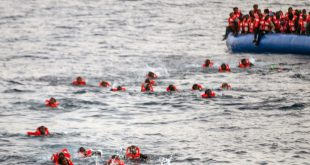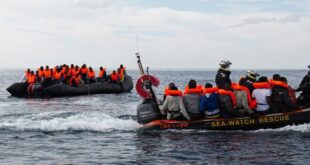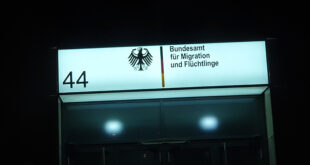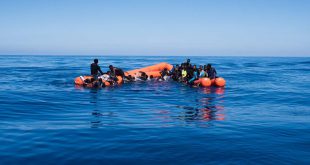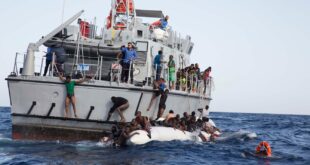Far fewer people are making the dangerous journey from Libya to Italy. Maryline Dumas of InfoMigrants talked to people in Libya to find out why.
The number of migrants arriving in Italy has significantly decreased since the beginning of this year. Compared to the same period in 2016, there has been a 22 per cent decrease. In August alone, there was a drop of 80 per cent. There are various theories about why this is, although a common thread is that European policies are having an impact.
“Pull-factor” of rescue boats?
Libya’s UN-backed Government of National Accord announced in August that there would be an exclusion zone off the Libyan coast that would bar rescue boats. Since then, NGOs are required to obtain permission from the Libyan state to enter this area to rescue people.
According to the Libyan coastguard spokesperson, General Ayub Ghassem, this has translated into a drop in departures. “Everyone who wants to work in the area must [respect the new exclusion zone]. If they agree, they will be able to enter our national waters. And only the Libyan government will decide which sectors and which fields of work will be allowed to enter.”
Ghassem firmly believes that NGO rescue boats have been a “pull factor” for migrants wanting to reach Italy. “The NGOs have acted as a maritime taxi service for the smugglers,” he says.
This is a position that has been firmly denied by NGOs operating on the Mediterranean. Doctors Without Borders (MSF) has been very clear that forcing people to remain or return to Libya is condemning them to suffering and abuse.
Local residents fed up
But with Europe’s borders at breaking point, EU policy makers have turned their focus to stopping the boats. One of the main Libyan departure points for migrants is the city of Sabratha. The local mayor, Hussein Dawadi, says that EU policy is stopping smugglers. “The European Union, through Italy, has sent a clear message that there will be an EU presence on the sea. This has been a first step. It has sent a signal to smugglers that they could be arrested during operations at sea.”
There has also been pressure mounting from local citizens. They are fed up with finding dead bodies on their beaches, featuring in negative media coverage and the difficulties of dealing with large groups of migrants.
In 2015, residents of the neighbouring town of Zuwara took matters into their own hands, forming a specialized intervention squad to hunt down and get rid of people smugglers. Now, bolstered by EU commitments to target smugglers, Sabratha hopes to do the same.
“Promises were made at the meeting in Rome. The EU representative said he would give 200 million euros to 11 Libyan cities concerned with migration issues,” says Mayor Dawadi, as one of the future initiatives to stop smugglers.
In addition, it has been alleged that the recent drop in migrants is due to Italy directly paying smugglers to stop their activities. A spokesperson from the one of the main smuggling operators, Brigade of the Martyr Anas al-Dabashi, confirmed this agreement to the Associated Press news agency.
Other factors involved
Migration analyst Chokri Ftis is cautious about these methods. He believes that Italy’s actions will just force smugglers to relocate their activities. “They have to find somewhere else. The obvious alternative is the Wershefana area and the Sidi Belal harbour, close to Tripoli,” he says.
Chokri is also careful to put the results of European policymakers in perspective. The exceptionally high number of migrants crossing to Europe in 2016, he says, distorts the figures for 2017. There are also other factors involved, he believes. Media coverage of the difficulties of the situation, as well as the current political situation in Libya, is discouraging migrants from coming. Furthermore, the northern flow of migrants from Sub-Saharan Africa has also been slowed because of internal conflict in southern Libya.
© InfoMigrants
 THE AFRICAN COURIER. Reporting Africa and its Diaspora! The African Courier is an international magazine published in Germany to report on Africa and the Diaspora African experience. The first issue of the bimonthly magazine appeared on the newsstands on 15 February 1998. The African Courier is a communication forum for European-African political, economic and cultural exchanges, and a voice for Africa in Europe.
THE AFRICAN COURIER. Reporting Africa and its Diaspora! The African Courier is an international magazine published in Germany to report on Africa and the Diaspora African experience. The first issue of the bimonthly magazine appeared on the newsstands on 15 February 1998. The African Courier is a communication forum for European-African political, economic and cultural exchanges, and a voice for Africa in Europe.




